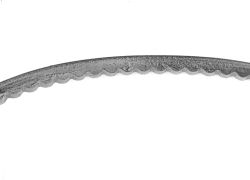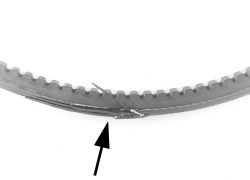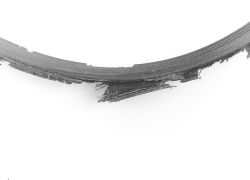
How do I know when to Replace my Serpentine Belt?
A serpentine belt is made of rubber molded over a core of stranded natural/synthetic fiber cords. Over time, the rubber will dry rot and crack. In some cases the belt/cords will stretch and if the belt doesn't break first, the slop from the stretching could cause your vehicle accessory systems (electrical, power steering, water pump, AC) to not function properly. You should inspect your belt at every oil change or have someone check it for you so that you won't get stranded from a broken, rotten, old serpentine belt.
INSPECTION
| Fig. 6: There are typically 3 types of accessory drive belts found on vehicles today. The ribbed belt is commonly referred to as a Serpentine Belt.
|
| Fig. 7: An example of a healthy drive belt
|
| Fig. 8: Deep cracks in this belt will cause flex, building up heat that will eventually lead to belt failure
|
| Fig. 9: The cover of this belt is worn, exposing the critical reinforcing cords to excessive wear
|
| Fig. 10: Installing too wide a belt can result in serious belt wear and/or breakage
|




